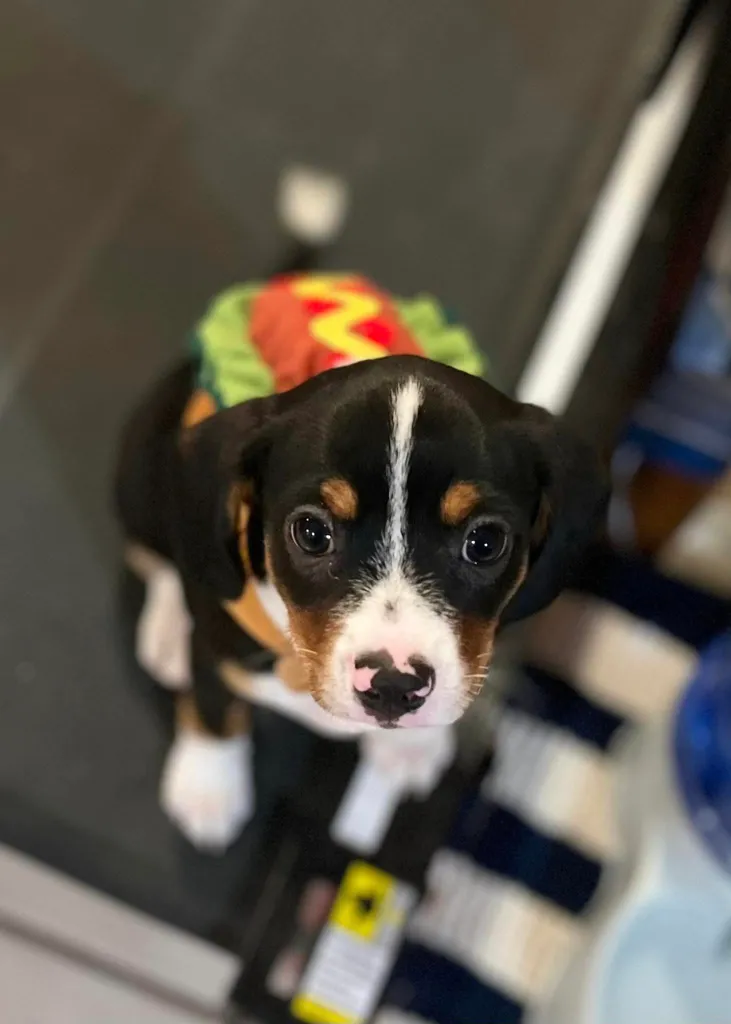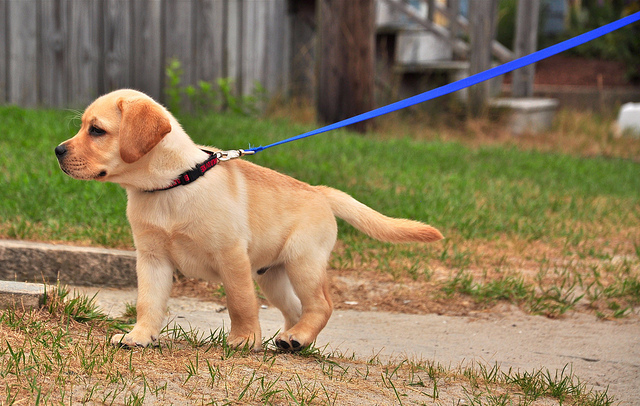Note: thank you so much to Bailey Stickney for allowing us to cross-post this wonderful piece from her blog.

I was engaging in therapy remotely a few years ago. I was on Zoom in my house, and I had a board and train client at the time. Most of my board and trains are working on impulse control and just overall refraining from terrorizing the house when someone is not paying attention to the dog 100% of the time. So I was sort of talking to my (ex)therapist and tossing treats to this dog lying on his mat every so often. The therapist asked me what I was doing. I told him I was training a dog, and he responded. His tone was shocking, especially coming from a therapist that has a couple of specialties in childhood development and in teaching parents how to parent with positive reinforcement. It was just so weird; his tone got really dark and he said, “oh he’s going to get fat.”
That was his first – and possibly only – concern. He was so worried that this dog (a dog that he doesn’t know, and who’s owner paid me – a professional dog trainer – good money to train), would get fat. The longer I think about it, the crazier it feels. He is a mental health professional, and he’s still in this mindset. That’s the state we’re working in here.
I am sure that, like many a layperson, this therapist didn’t realize the dog’s regular calories could be used to do the training. The dog has to eat something every day, right? Why wouldn’t we put that to use? But still, it was absolutely crazy that I had to take time out of my therapy session that I paid for to educate this man, and eventually to tell this therapist to mind his own business.
I think about this interaction often, and I can’t help but make the connection to fatphobia in America. Of course the resistance to using food to train dogs is rooted in our own fatphobia!
Another time, I was walking dogs for a local rescue. We usually had one or two dogs with some pretty severe behavior problems. I’m thinking of a particular dog – we’ll call her Gretta. Gretta must have been at the building for about a year. She had some dangerous behavior problems, but one of the milder issues was lunging at cars while out on walks. Even on leash, she almost got hit several times! She pulled the leash out of many a dog-walker’s hands as well. We implemented a training plan that included pairing her favorite treats with the sight of cars. It worked! It was easy to walk her around cars after a few weeks’ worth of training. Towards the end of her stay in the shelter, Gretta started to little chunky, but she was still functional and joyful.
I was talking with the shelter coordinator because she was complaining about how fat Greta was. I said, “well I mean we’re feeding her a lot at meal times.” It was a lot. I remember thinking “this is twice what I feed my dogs of the same weight” – 4 cups a day. So I just suggested that we could reduce the regular food at mealtime. The coordinator looked at me with a sharpness in her eyes and said, “we need to cut down on her treats.” I was flabbergasted. The training treats had made her walkable in just a couple of weeks! It was dangerous to walk her before, and it was not dangerous to walk her with the treats. Fatphobia is so strong that we had this shelter manager more worried about Gretta being fat than the way her life was positively impacted through the use of positive training with food. This shelter manager was more concerned about having a fat dog than she was for the of the safety of the volunteers that were walking this dog.
It is downright dangerous; as a society, we’re willing to sacrifice safety to avoid fatness. I hope to do better from within my company.
So when we are working with the general public, who believe that food and fat are scary, we may need to reassure them that things will be okay. We will need to teach our clients that we can use their dog’s regular calories, and we don’t necessarily need to add extra calories to their diet. We will probably have to change how their dog receives their calories. Smaller dogs may have to get all or most of their calories from training. Larger dogs may be able to receive smaller meals so we can use the rest for training. Some dogs will happily work for their regular kibble (I have one such dog, and I sure do feel lucky). Of course, we need to use food that is reinforcing to the dog in front of us, so if that dog will not work for their kibble, then maybe we can find a wet dog food and deliver it from a squeezable food tube. This way, your dog is getting something delicious and a complete, nutritious meal. This should help the general public feel better about using food to train their dogs.
I’ll end with a mantra of mine: “there are worse things to be than fat.” It’s not the worst thing if your dog is chubby, and it’s not the worst thing if you’re fat. There’s lots of lots and lots of things that go into weight. There are tons of people that can eat and eat and eat and eat and eat without gaining any weight. It’s the same with dogs! There are also people and dogs that can eat almost nothing and stay large. Weight is complicated. It’s not the most important thing, and we can focus on creating joyful, functional lives without worrying about weight.
About the author:
I’m a fat person. I don’t eat very much. I really don’t consume many calories. I’ve also never owned a fat dog. I feed my dogs training treats all day, and they are not fat. I give them two meals each day plus training treats throughout the day. And they’re not fat. We can let go of some this fear; it’s not helpful. Genetics are a Whole Thing, and I personally will choose to live a functional, joyful life over a thin life.
You can learn more about Bailey, as well as the other Paws Abilities dog trainers, here!










